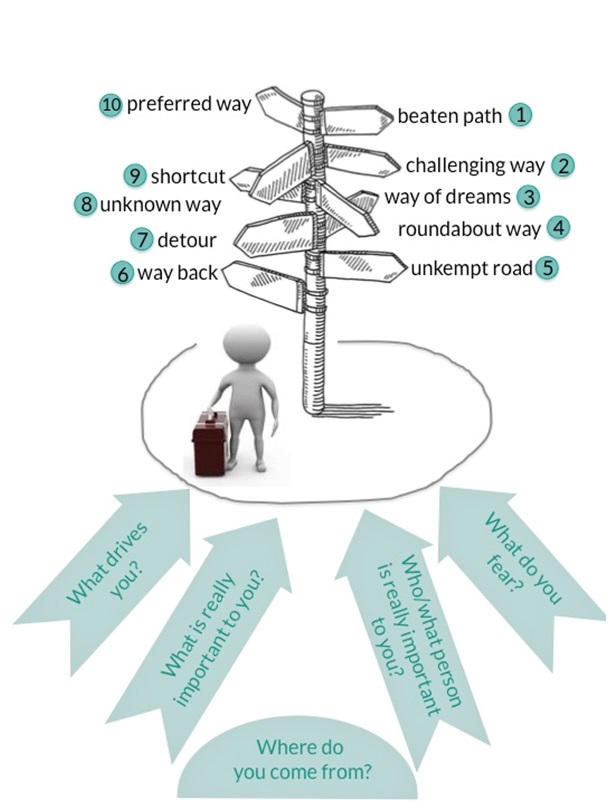A Coaching Model Created by Katja von Glinowiecki
(Diversity Coach, CHINA)
The goal itself should be just a landmark or signpost, not a set destination. unknown
Working in cross-cultural and expatriate coaching, the most significant step, in my experience, is to help my clients acknowledge the deep trans-formations involved in the transition periods they are experiencing at that moment. Moving to another country, living in a different culture, often combined with finding a new purpose in life can be a big challenge. It questions our identities as well as own value system. Having gone through these situations myself several times, my aim is it to guide my clients in finding answers to those essential questions themselves. Through my coaching I raise their awareness of the many ways of how to continue their journey of live successfully in a new environment. To fully understand the present situation, the clients also need to bear in mind where they have come from and what experiences they bring along from the past.
We all stand sometimes at important cross-ways in our lives, where we have to ask ourselves: Where to now? The signpost model can help to find the right direction and, more importantly, it shows how many interesting options we have.
The model is use most effectively by answering the guiding questions first, to then find out what or who influences your decisions.

Where do you come from?
How did you become the person you are now?
What were the most important events, obstacles and people in your life?
What’s really important to you?
Write down three things that immediately come to mind. Don’t be too specific or detailed.
What are your values?
What do you believe in?
What principles would you like to get rid of?
Imagine a worst case scenario, in which everything fails – what will prevail?
Who/what person is really important to you?
That is, who are the people whose opinions are important to you, who influence your decision, and also who are affected by your decisions.
Think of those people you really like, and also of those you fear.
What pushes you?
What are the issues in your life that always stop you from thinking about the really important questions?
What deadlines do you have in your mind, where do you feel pressure?
What do you have to do? And when?
What do you fear?
Things, circumstances or people you worry about, or that sap your energy.
Now, look at the notes you wrote down. What is missing? Which issues emerged? Do the noted keywords tell the story of how you became who you are? Adjust, if necessary, keywords and your answers.
Look at the ways in front of you. Develop your personal signpost. Think about the exemplary ways in the model. Imagine each of them individually for your situation. If need be, find additional ones or modify the modeled ways to suit your situation.
What would be for you:
- The beaten path, the way you usually take?
- The challenging or enticing way, the way you feel attracted to (something you always wanted to explore)?
- The way of dreams, imagine what you would like to achieve, what you dream about?
- The roundabout way (what obstacles are in your way that prevent you from getting anywhere? That you might need to surpass or circumvent)?
- The unkempt road, the way hasn’t been used for a while and it might get bumpy, but it can be adventurous and fun to drive down a dirt road.
- The way back to where you came from?
- The long way, the way that seems to have the longest distance to cover, but maybe has additional merit?
- The unknown way, the way you never thought of so far?
- The shortcut, a minor-road that can be seen as a fast alternative. Usually a quicker way, but better?
- The preferred way, the way people around you would recommend to take. People who care about you?
Make your decision
When was the last time you did something for the first time?